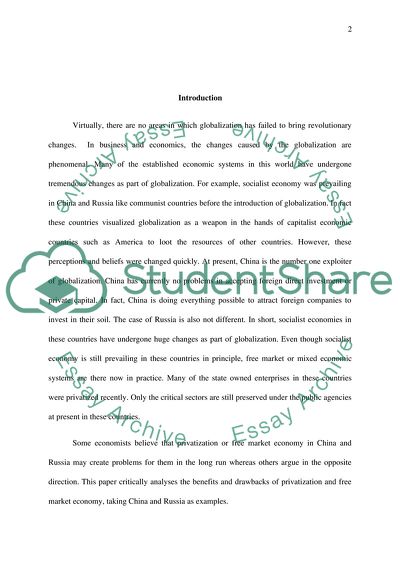Cite this document
('The transcation from a centrally planned economy to a free market or Essay, n.d.)
'The transcation from a centrally planned economy to a free market or Essay. https://studentshare.org/macro-microeconomics/1807228-the-transcation-from-a-centrally-planned-economy-to-a-free-market-or-mixed-economy-involes-state-owned-enterprises-being-privatised-but-economists-debate-as-to-whether-this-is-actually-beneficial-to-the-countrys-economy
'The transcation from a centrally planned economy to a free market or Essay. https://studentshare.org/macro-microeconomics/1807228-the-transcation-from-a-centrally-planned-economy-to-a-free-market-or-mixed-economy-involes-state-owned-enterprises-being-privatised-but-economists-debate-as-to-whether-this-is-actually-beneficial-to-the-countrys-economy
('The Transcation from a Centrally Planned Economy to a Free Market or Essay)
'The Transcation from a Centrally Planned Economy to a Free Market or Essay. https://studentshare.org/macro-microeconomics/1807228-the-transcation-from-a-centrally-planned-economy-to-a-free-market-or-mixed-economy-involes-state-owned-enterprises-being-privatised-but-economists-debate-as-to-whether-this-is-actually-beneficial-to-the-countrys-economy.
'The Transcation from a Centrally Planned Economy to a Free Market or Essay. https://studentshare.org/macro-microeconomics/1807228-the-transcation-from-a-centrally-planned-economy-to-a-free-market-or-mixed-economy-involes-state-owned-enterprises-being-privatised-but-economists-debate-as-to-whether-this-is-actually-beneficial-to-the-countrys-economy.
“'The Transcation from a Centrally Planned Economy to a Free Market or Essay”. https://studentshare.org/macro-microeconomics/1807228-the-transcation-from-a-centrally-planned-economy-to-a-free-market-or-mixed-economy-involes-state-owned-enterprises-being-privatised-but-economists-debate-as-to-whether-this-is-actually-beneficial-to-the-countrys-economy.


